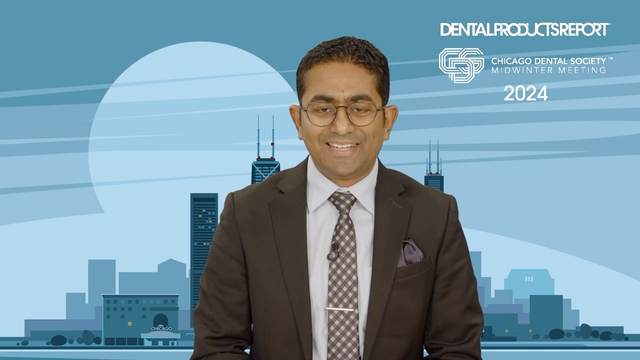Cementation and bonding adjuncts for best outcomes
The importance of following the manufacturer’s guidelines.

Ideally, cementation and bonding restoratives would be a simple case of applying the material, seating the restoration and sending the patient on his or her way. However, that rarely happens. Often, additional steps and/or materials are required to properly complete the case.
“Those extra steps or materials mainly happen when etching, or there is extra tooth preparation, primarily when doing more adhesive bonding techniques,” says Dr. Jeffrey Lineberry, DDS, a general dentist in Mooresville, North Carolina.
Etching
Etching is the use of an acid to prepare the tooth’s existing enamel for the application of adhesive, promoting a stronger bond. The acid roughens the tooth’s surface, increasing the retention properties of the product.
“Some clinicians use that technique when they’re putting crowns on,” Dr. Lineberry says. “For instance, when we have minimum tooth preparation height. In other words, there is minimum retention, so we use bonding to help overcome that.”
Trending article: Break out of your restorative rut
Etching requires additional steps, but the extra time required is inconsequential, especially when outcomes are considered. Further, each manufacturer’s guidelines are specific to their product and must be followed precisely.
“I think it’s insignificant because they all have their individual steps," says Dr. Sarah Jebreil, DDS, a cosmetic dentist in Newport Beach, California. For example, it’s always important to look at the manufacturer’s guidelines and how long they say you should air dry the bond to get rid of some of the ethanol. Following all the manufacturer’s steps is really important. Each one has its own little idiosyncrasies, but doing all the steps is important. Timewise, they’re all about the same. The only reason people like to use different kinds of bonding agents is, for example, if you’re cementing a crown and you’re in dentin, the thought process is, ‘Do you really need to etch?’”

There are three different etching methods:
- Total-etch: Uses phosphoric acid. The enamel and the dentin are both etched.
- Selective-etch: Uses phosphoric acid. Only the enamel is etched.
- Self-etch: The etchant is contained in the acidic adhesive. No phosphoric acid etchant is applied or rinsed off.
The method used is governed by the product.
“Primarily, it depends on the product you use.” Dr. Lineberry says. “You have to follow the manufacturer’s recommendations for them.”
Clinicians with a preferred etching method can use that as part of their criteria for bonding agent selection, if so desired.
“Given the generations of materials, the clinician can find a product that matches his or her preferred etching style or need,” Dr. Lineberry observes. “We’ve got systems out now that are universal. With those systems, you can either do total-etch or self-etch.”
Liners
If the tooth’s pulp is exposed (or nearly exposed) there is a risk of pulpitis, which may lead to necrosis, and, ultimately, root canal treatment or extraction. But to save the tooth, doctors can employ a technique called “pulp capping” or “liners”.
Liners prevent the pulp from deteriorating by placing a small amount of medicament-like calcium hydroxide or Mineral Trioxide Aggregate (MTA)-which both protects the pulp from further damage, as well as stimulating the pulp to lay down a bridge of reparative dentin. A liner’s role for use with cementation is as a protective layer on the dentin surface, protecting the tooth and the pulp.
“When I think about liners, primarily I’m thinking about using it as the basis of liners for pulpal protection,” Dr. Lineberry says. “Of course, now we’ve got a lot of biologically active materials and you can go over the areas that are deep and close to the pulp to protect it and help stimulate reparative dentin in the area to help protect the nerve.”
Continue reading on page two...
Liners have been around since the late 1940s and there are many options now.
“There are a variety of liners,” Dr. Lineberry says. “There are so many when you start looking at them. You have some that go way back when we used to use Dycal. Something a lot of people use is just a basic glass ionomer, like Vitrebond. We also have the newer bioactive materials for liners.”
Curing
Cements and bonding agents generally employ some sort of curing mechanism. That is the material will not achieve its full retentive capabilities until it is polymerized by some sort of curing method.
Curing is generally achieved chemically or through a special curing light. Curing lights give the clinician an opportunity to work and seat the restoration without worrying about the cement or bonding agent setting before they are ready. A chemically cured agent, on the other hand, is ideal when the opacity of a restoration limits the amount of light able to reach it. The method by which an agent is cured typically depends on the product, the restoration and where the restoration is placed.
“If you’re using a lighter material on the anterior teeth, that gives you all kinds of benefits,” Dr. Lineberry says. “You have full control over setting it. You don’t have that with posterior teeth because of access and the chemical curing.
“Particularly, for anterior restorations, I like to use a light-curing,” he continues. “However, some of the materials we have nowadays you can actually dual-cure. The concern was that in some of the older materials, some of the photoinitiator chemicals could cause color shifts over time. You don’t want that brown color underneath that tooth. It won’t matter so much in a back tooth if you notice it, but in the front teeth you’d notice it. The manufacturers have now moved away from that.”
Some products allow for dual-curing. This method employs both light and chemical cure mechanisms.
“The method I use for a crown or an inlay, is a dual-cure cement,” Dr. Jebreil says. “I etch and prime the porcelain and then I put bond on. Then I etch and bond the tooth, put the cement in the restoration and light-cure the restoration. I use the cement according to what restoration I’m cementing, but I keep it very simple and that works for me.”
Dr. Lineberry also reminds clinicians to be cognizant of curing lights-both their compatibility with materials as well as their output.
“If you have an old curing light, you want to make sure things are going to do what they’re supposed to do, as far as compatibility,” Dr. Lineberry says. “You may have a newer material, but if things are not compatible or the light intensity is not good enough, then it’s going to cause problems.”
Related reading: Why you need to rethink your bonding technique
Best practices
Because there may be additional steps required for a given product and case, it is especially important to understand each product’s instructions for use.
“Most everybody that comes out of dental school can handle cementation, place a liner, and so on and so forth,” Dr. Lineberry observes. “I think it’s critical to be knowledgeable about your materials, know your manufacturer and the proper technique because almost all of these things are technique-sensitive. When I was in dental school, they gave you the instructions,” Dr. Jebreil adds. “They didn’t have you actually read the manufacturer’s guidelines. You just learned how to do it. Once you’re out of school and fail a few times, you take some classes, and actually read the pamphlets that come with the product. Then you see, ‘I was in air drying for five seconds,’ or ‘I wasn’t doing the scrubbing motion,’ or ‘I wasn’t doing all these things. You realize all the little things are important. I think it makes a big difference. These products are tested over and over again. It’s very important to read the guidelines, because that’s where all the research is.”
Many dentists tend to stick with the same product because they know and are comfortable with how it works.
“Sometimes I do try new cements, but I do have my favorites, because a lot of times it has to do with ease of cleanup and the flow of the cement,” Dr. Jebreil says. “I have tried others, and the ones I use tend to be my favorites. I do try some new stuff here and there, but I’m not one to always jump around.”
Additional steps and materials may be inconvenient and somewhat time-consuming, but, those additional steps help the clinician achieve the best outcomes possible.
ACTIVA BioACTIVE Bulk Flow Marks Pulpdent’s First Major Product Release in 4 Years
December 12th 2024Next-generation bulk-fill dental restorative raises the standard of care for bulk-fill procedures by providing natural remineralization support, while also overcoming current bulk-fill limitations.
















